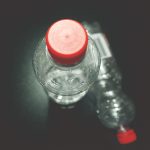Magnetic Ink And Recycling
Recycling practices across the globe have seen minimal advancements throughout the years with recent studies revealing less than 6% of plastic bottles are recycled to make new bottles (Magnomer). This distressing statistic is in large part due to the use of shrink sleeves and pressure-sensitive labels, which are difficult to remove from the bottles, limiting their recyclable potential. Recognizing the need for a practical solution, Ravish Majithia, the founder and CEO of Mass.-based company, Magnomer, believes his company has created a solution to eliminating thousands of pounds of plastic from entering our landfills using the power of magnets, more specifically, magnetizable ink!
Capitalizing on existing technology already used by most major recycling facilities, Magnomer uses magnetic ink to allow reclaimers to easily remove labels with magnets, similar to the process they use to avoid ferrous metal contamination in their extruders. And with the ability to create a full-color panel of ink, including a transparent option, Magnomer’s ingenious invention can be applied using standard label printing equipment. In a statement by Majitha, he noted “On the printing and integration side, we used all high-volume commercial equipment to showcase … This can be done at commercial grade without any issues, so the scalability has been proven.”
Magnomer's efforts are revolutionary, but their application is simple.
Step 1: Manufacturers print their labels without changing their manufacturing process using Magnomer’s ink.
Step 2: Once the plastic bottles have reached the end of their life cycle, they are sent to a recycling facility.
Step 3: PET bottles are then ground into small flakes.
Step 4: Recycling facilities remove each label using their own in-house magnetic separators.
From the onset of their efforts to increase the recyclable potential of plastic bottles across the globe, Magnomer has been acutely aware of the necessity to integrate their process with the technology available in recycling facilities today. In current manufacturing processes, the majority of shrink sleeve films are created from PETG on PET bottles. This combination of materials, however, sinks in float sink tanks, subsequently causing clumping in the drying process and unwanted bleeding and staining. Despite efforts like polyolefin and crystallization films and de-seaming label technology, previously proposed, recycle-friendly labels have seen minimal adoption, given the need to acquire additional equipment and technology.

